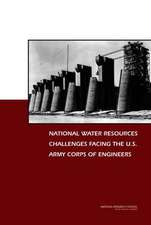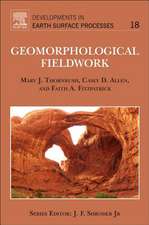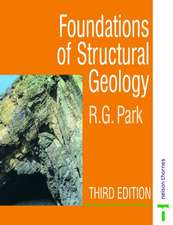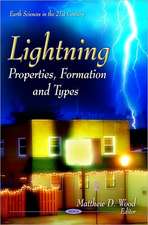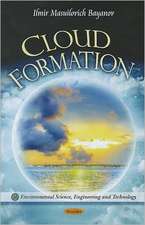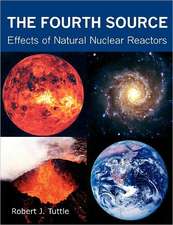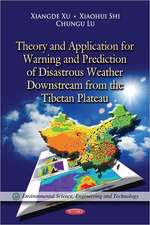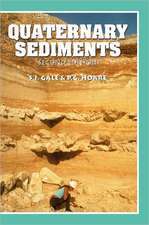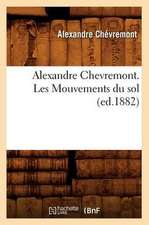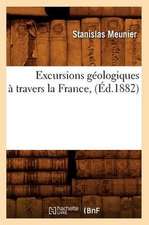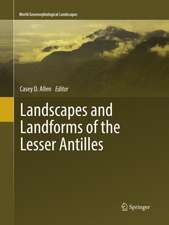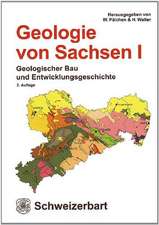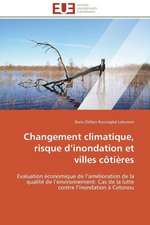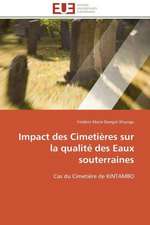Urban Geomorphology: Landforms and Processes in Cities
Editat de Mary J Thornbush, Casey D. Allenen Limba Engleză Paperback – 25 iul 2018
- Features a cross-disciplinary perspective, highlighting the importance of the geosciences to environmental science, engineering, and public policy
- Focuses on the built environment as the location of concentrated human impacts and change
- Provides an international scope, including case studies from urban areas around the world
Preț: 587.25 lei
Preț vechi: 645.33 lei
-9% Nou
112.37€ • 120.16$ • 93.69£
Carte tipărită la comandă
Livrare economică 11-25 aprilie
Specificații
ISBN-10: 0128119519
Pagini: 362
Dimensiuni: 191 x 235 mm
Greutate: 0.62 kg
Editura: ELSEVIER SCIENCE
Public țintă
Primary: geologists, geomorphologists, earth scientists, physical geographers, environmental scientists, graduate studentsSecondary: architects, engineers, urban planners, policymakers, governments
Cuprins
1. Introduction Mary J. Thornbush and Casey D. Allen
Section 1: Paleogeomorphology and Archaeogeomorphology 2. Complex Interactions Among Geomorphological Hazards and Urban Evolution Since the Middle Age in a Mediterranean City Joana Maria Petrus, Mauricio Ruiz-Pérez and Joan Estrany 3. Geotourism Development in an Urban Area Based on Local Geologic Heritage Maria Gorska-Zabielska and Ryszard Zabielski 4. Archeogeomorphological evidences of Urban Sprawl and Anthropogeomorphological metamorphosis of Town Landscape on a Post-glacial area: Poznań Zbigniew Zwolinski, Małgorzata Mazurek, Iwona Hildebrandt-Radke and Mirosław Makohonienko
Section 2: Anthropogeomorphology 5. Urban Stream Geomorphology and Salmon Repatriation in Lower Vernon Creek, British Columbia Alexander MacDuff and Bernard Bauer 6. Landform Change Due to Airport Building Piotr Migon
Section 3: Landscape Influences on Urban Growth 7. Environmental Contamination by Technogenic Deposits in the Urban Area of Araguaina, Brazil Carlos Augusto Machado Sr. and Silvio Carlos Rodrigues 8. Transforming the Physical Geography of a City: An Example of Johannesburg, South Africa Jasper Knight 9. New Conceptual Frameworks in Urban Design: When Design Meets Geomorphology Paulina Espinosa
Section 4: Developing Geomorphological Hazards During the Anthropocene 10. Urban Geomorphology of an Arid City: Case Study of Phoenix, Arizona Ronald Dorn 11. Bivouacs of the Anthropocene: Urbanization, Landforms and Hazards in Mountainous Regions Kevin Gamache, John R. Giardino, Panshu Zhao and Rebecca Owens 12. A Dramatic, Geomorphologically Active Environment vs. a Dynamic, Rapidly Developing City Monique Fort and Basanta Raj Adhikari
Section 5: Urban Stone Decay: Cultural Stone and its Sustainability in the Built Environment 13. Urban Stone Decay and Sustainable Built Environment in the Niger River Basin Olumide Onafeso and Adeyemi Oludapo Olusola 14. A Geologic Assessment of Historic St. Elizabeth Church Using the Cultural Stone Stability Index, Auraria Campus, Denver, Colorado Casey D. Allen 15. Photographic technique used in a photometric approach to assess the weathering of pavement slabs in Toronto (Ontario, Canada) Mary J. Thornbush 16. Conclusion Mary J. Thornbush and Casey D. Allen
Descriere
Urban Geomorphology: Landforms and Processes in Cities addresses the human impacts on landscapes through occupation (urbanization) and development as a contribution to anthropogenic geomorphology or "anthropogeomorphology." This includes a focus on land clearance, conservation issues, pollution, decay and erosion, urban climate, and anthropogenic climate change. These topics, as well as others, are considered to shed more light on the human transformation of natural landscapes and the environmental impacts and geomorphological hazards that environmental change can encompass. Its multidisciplinary approach is appropriate for audiences from a range of disciplines and professions, from geologists, conservationists, and land-use planners to architects and developers. Urban Geomorphology not only transcends disciplines, but also covers varied spatial-temporal frameworks and presents a diverse set of approaches and solutions to human impacts and geomorphological hazards within urban landscapes.
- Features a cross-disciplinary perspective, highlighting the importance of the geosciences to environmental science, engineering, and public policy
- Focuses on the built environment as the location of concentrated human impacts and change
- Provides an international scope, including case studies from urban areas around the world

